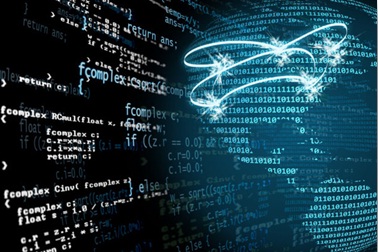

|
Syllabus : Prelims GS Paper I: Economic and Social Development-Sustainable Development, Poverty, Inclusion, Demographics, Social Sector Initiatives, etc. Mains GS Paper III: Effects of liberalization on the economy, changes in industrial policy and their effects on industrial growth. |
Context: Using Information as a tool in making effective industrial policies.
Background: Information based technology is playing very significant role in economic growth, as well as other dimensions of economic and social development. Technological advancement has surged the unexpected success of India’s industry sector and the spillovers of this success into various other enabled services, attempts to make Information and its benefits available to India’s rural masses, e-commerce for the country’s growing middle class, the use and impacts of technological information in the manufacturing sector, and various forms of e-governance, including internal systems as well as citizen interfaces.
These information-based technologies have been widely adopted and proved to be a prime engine for economic progress.
Driving Economy
Almost all sectors of economy have been driven by a significant tool, called information, thus it can be referred as the new currency that powering economies.
In the present world, the Industrial expansion and simultaneously up gradation are based upon information gathering and analysis. The new currency drives processes and decision-making across a wide array of products and services, making them more efficient and value accretive for consumers.
Role of Information in Transformation
The automobile, for instance, A modern automobile is develop by using more than 40 per cent of electronic based components and a modern electric vehicle carry close to 100 million lines of code, which is more than that used by a Boeing 787 or the Chrome browser.
This is a paradigm shift using information as a tool to transform tangible into intangible good.
Even if you look at a conventional “metal-based” industrial product, information and electronics play crucial role. There is increasing digitisation and electronification of industrial activities, products and services, influencing the evolving skill sets in industry.
This revolution is pervasive across all products, as information availability drives efficiency and creates value for customers by providing greater control over the product and its surrounding environment. And, this is what impels customers to value products that have utilised these evolving technologies.
Government Policies
Government's primary and sole objective is to improving the life of people. For which, The government of India has taken many initiatives towards strengthening the innovation ecosystem.
To address the needs of various stakeholders, governments have tended to build specialised departments and designed policies that govern those areas. However, over time, as each of these departments grew, they have tended to operate in silos. This has for most of the 20th century been reasonably successful in driving economic development in countries.
Sources of Information
To understand the potential and limitations of the private sector within current markets, it is useful to understand the nature of the research and development (R&D) and deployment processes. Innovation and R&D are the very source of information. Hence the ultimate purpose of R&D is to create technologies that are developed into products, which are "used and useful" in the marketplace.
In the past, innovation was described as occurring in a sequence of orderly and sequential steps, that are basic science, applied research, development, demonstration, product development, and commercial products.
But today, the innovation process is dynamic with extensive interactions and interconnectedness among all steps and with the marketplace.
For example, information learned from a demonstration project or from marketing activity may reveal the need for more basic or applied research to enhance technology performance. Similarly, deployment activities provide marketplace information to influence R&D requirements.
Recent developments in the field of science and technology in India are as follows:
India ranked 52 in Global Innovation Index (GII)-2019. It ranked 50 in gross expenditure on R&D segment with 0.6 per cent of GDP spending.
The Government is extensively promoting research parks technology business incubators (TBIs) and (RPs), which would promote the innovative ideas till they become commercial ventures.
Working in Separation
Industrial promotion policies in India, looks at encouraging capital formation from a manufacturing perspective. But, if we look at the automobile industry, policies are governed by the Heavy Industries and the Surface Transport Ministries, respectively. However, having considerable share of automation and electronics, policies does not decided by Electronics and Information Technology Ministry.
Another example involves drones that could serve different sectors, including agriculture, but Aviation Ministry is sole authority in dicision making and formulation of policies.
Conclusion
There is a need to have a holistic view of policies for economic development as technology is becoming a significant role player in most industries. A change in policy framework regarding economic development that enables various ministries to work together is essential. A sufficiently empowered policy clearing cell could ensure a holistic view on policy across departments of government, at the State and the Centre.
There is increasingly a need for inter-departmental cooperation and synergy not only in policy framework but also in deployment.
In this evolving policy framework, it is important that there is close cooperation and alignment between the Centre and State to ensure effective implementation on the ground.
Connecting the Article
Question for Prelims : Which of the following Body released Global Innovation Index ?
(a) IMF
(b) UNCTAD
(c) WIPO
(d) None of the Above
Question for Mains : Explain how Information can transform technological growth and perspective in the long term industrial policies. What arrangements need to be put in place to ensure that ethics and privacy are not compromised ?

Our support team will be happy to assist you!
